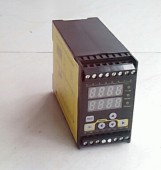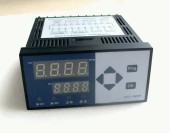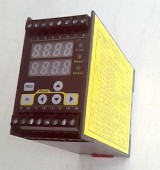Appendix C: Rapid-Q Supported Data Types
| Rapid-Q Documentation by William Yu (c)1999 |
Appendix C: Data Types |
|
Introduction to Data Types
A data type is just a definition. It is used to bind a variable to its definition
and cannot be changed once bound (except for VARIANT type variables). For example,
if a variable is bound to a STRING data type, it cannot change itself to an
INTEGER definition.
A variable can be assigned any one of these supported data types,
BYTE, WORD, DWORD, SHORT, LONG/INTEGER, SINGLE, DOUBLE, STRING, VARIANT, and fixed-length
strings. There are also such things as User Defined Data Types, which will be discussed
in another section. Some BASIC implementations hold INTEGER as a 16-bit value,
while Rapid-Q chooses to go 32-bit. So if you're worried about converting your old
code, make sure to replace all occurrences of INTEGER with SHORT.
How to use data types
Since Rapid-Q is a BASIC language, there are 2 ways to define your variables.
You can choose to do it explicitly using DIM
DIM myNum AS LONG
DIM myStr AS STRING
Similarly, you can attach a suffix symbol which describes the variable type:
myNum& = 234
myStr$ = "abc"
Chapter 3 has a list of these suffixes, but are listed here again for your convenience:
Type ID Size Range
--------- ---- ---- -------------
Byte ? 1 0..255
Word ?? 2 0..65535
Dword ??? 4 Only Linux version for now...
Short % 2 -32768..32767
Integer & 4 -2147483648..2147483647
Long & 4 -2147483648..2147483647
Single ! 4 1.5 x 1045..3.4 x 1038
Double # 8 5.0 x 10324..1.7 x 10308
String $
A variant data type has no suffix, so you'll have to use DIM instead, or
change the default DIM operation.
$OPTION DIM VARIANT
myVar = "hello!"
myVar is defined as a VARIANT since we've changed the default data type
for DIM. Whenever Rapid-Q comes across an undefined symbol (with no suffix), it
will choose the data type according to traditional BASIC. Traditionally, this has been
choosen to be either SINGLE or DOUBLE. With Rapid-Q, you can choose any of the existing
data types as the default one.
Variant data type
A Variant is a special kind of data type, since a Variant can mutate.
Don't be afraid, it won't mutate to a virus or anything like that.
It simply changes types on the fly, as needed. Even a simple operation like
addition changes when you add 2 variants together. Take this for example:
DIM V1 AS VARIANT, V2 AS VARIANT
V1 = 101
V2 = "99.5"
PRINT V1+V2 '-- Output is 200.5
As you'll notice V2 is originally assigned a string, but V2 has changed its type to
a floating point number when the addition takes place. Note that V2 is still a string,
it just mutated itself for that one operation. Similarly,
DIM V1 AS VARIANT, V2 AS VARIANT
V1 = "101"
V2 = 99.5
PRINT V1+V2 '-- Output is 10199.5
In this case, V2 was originally a floating point number, but changed its type
during the addition operation to a string. Notice how the order of operation
defines the mutation. In the previous example, V1 was a number, so V1+V2 results
in a numeric expression, while the above example produces a string.
|
|
 g.yi.org Hits:0 Last modified:2015-12-25 19:42:27
g.yi.org Hits:0 Last modified:2015-12-25 19:42:27

 搜索
搜索 论坛
论坛 Home
Home 回顶部
回顶部







